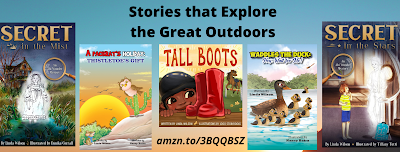By Karen Cioffi
Probably one of the most difficult aspects of writing is providing content that your reader can turn into pictures or imagery.
You may know exactly what you’re trying to convey, the image you want your reader to see, but does your content translate into effective imagery for your reader?
Stephen King discusses this topic in an informative article in the August 2010 Writer magazine. Obviously, any advice from this author is valuable, but I especially like his views on imagery. A key tip that struck me is: “Imagery does not occur on the writer’s page; it occurs in the reader’s mind.
The question that follows is: how does a writer transfer what’s in her mind into the mind of the reader?
The answer is through description.
Unfortunately, it’s not as easy as it sounds. What many writers may tend to do is offer too many details that aren’t necessary and may weigh the story down.
According to Mr. King, you need to pick and choose the most important details and descriptions that will allow the reader to understand what you’re conveying, but also provide enough room for the reader to create his own unique image.
To accomplish this task Mr. King says to “Leave in details that impress you the most strongly: leave in the details you see the most clearly; leave everything else out.”
The strategy in this is to look carefully at what you want to convey.
Picture an image in your mind and focus on the key aspects, the aspects that give you a clear picture of what it is. Then, write what you see. Again, this may not be easy to do, but Mr. King suggests that there is another vision tool to use, which he calls “a third eye” of imagination and memory.
What we see is translated to our brain. Once there we need to interpret that image and transcribe it into content that will provide the reader with a strong gist of what it is, but also allow the reader to fill in her own details. And, those details should convey what you’re targeting.
For example: The house stood dark and dreary.
While this simple sentence provides imagery that should enable the reader to create a picture, there are probably not enough details for the basic image you might be going for. What color is the house? Is it in disrepair? Is it a new or old house, big or small?
A possible alternative to the above example that adds a little more detail, but not too much is: Cracked shingles hung on the dingy grey house.
To further emphasis its disrepair, you might add: Chipped paint and missing caulking on the windows gave the house an eerie feeling.
Another example of imagery is from my children’s middle grade fantasy book, Walking Through Walls:
“Wang bound the last bunch of wheat stalks as the sun beat down on the field. Sweat poured from the back of his neck drenching the cotton shirt he wore.”
The two sentences provide sufficient imagery for the reader to understand the situation, while not giving too many details. If you notice, the content doesn’t mention the color of his shirt, or if Wang knelled on the ground or hunched over the bundle. It’s also missing a number of other details that aren’t necessary and would weigh the story down.
Interestingly, along with concise details, your characters’ names might also add imagery to your story. When you read my character’s name, Wang, what image comes to mind?
You might think of your story’s imagery as an outline or sketch, rather than a colored and finely detailed painting. The basic idea is there for your reader to enhance with her own imagination and memory.
This article was first published at: Imagery and Your Story
https://karencioffiwritingforchildren.com/2015/02/22/imagery-and-your-story/
ABOUT THE AUTHOR
Karen Cioffi is an award-winning children’s author, a successful children’s ghostwriter with 300+ satisfied clients worldwide, and an author online platform instructor with WOW! Women on Writing. For children’s writing tips, or if you need help with your children’s story, visit: https://karencioffiwritingforchildren.com
You can check out Karen’s books at:
https://karencioffiwritingforchildren.com/karens-books/
MORE ON WRITING
Self-Publishing a Children's Book - 4 Realities
Sell Your Books Face-to-Face
Why It's Called the The Slush Pile










.png)














.jpg)
.JPG)



